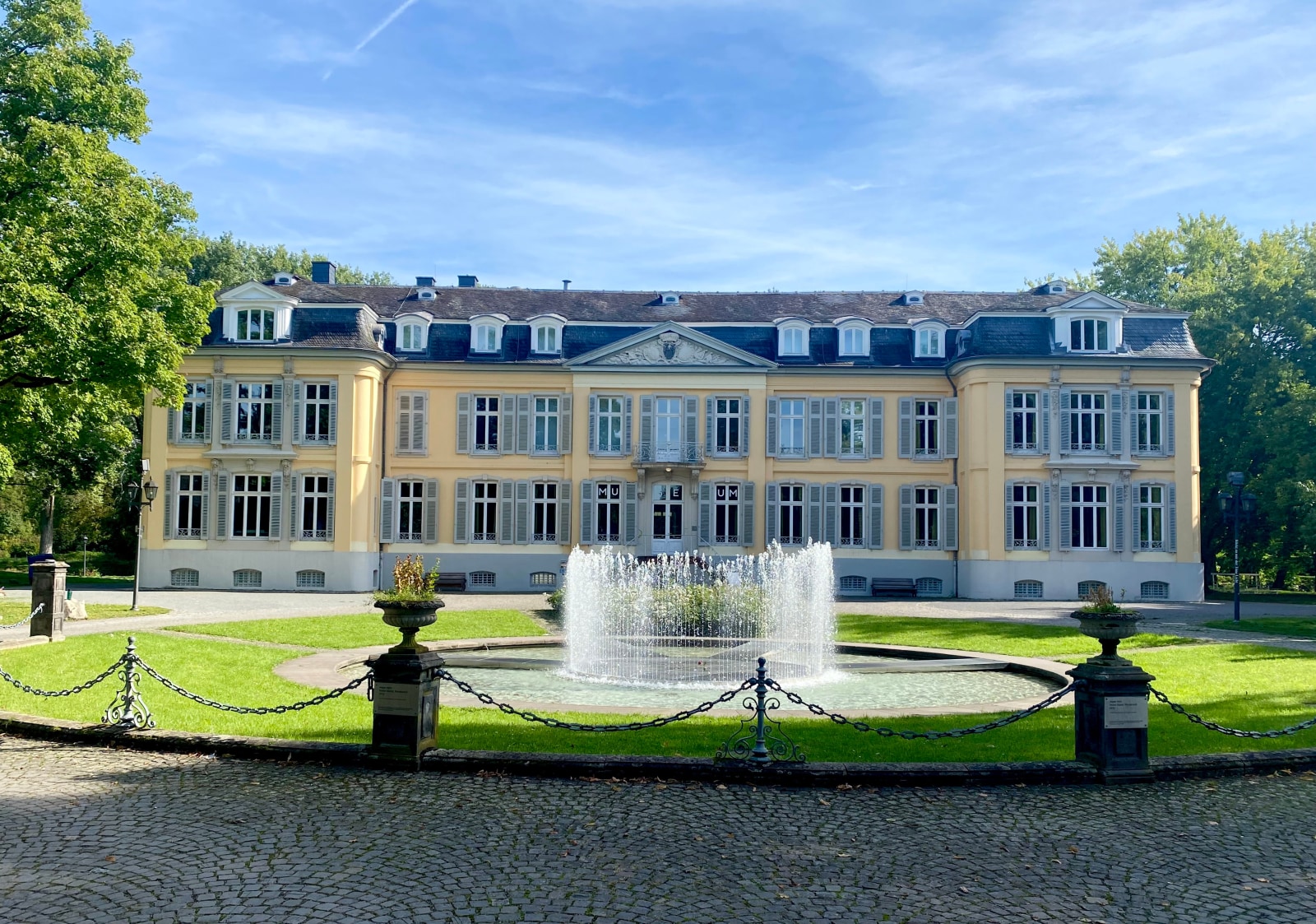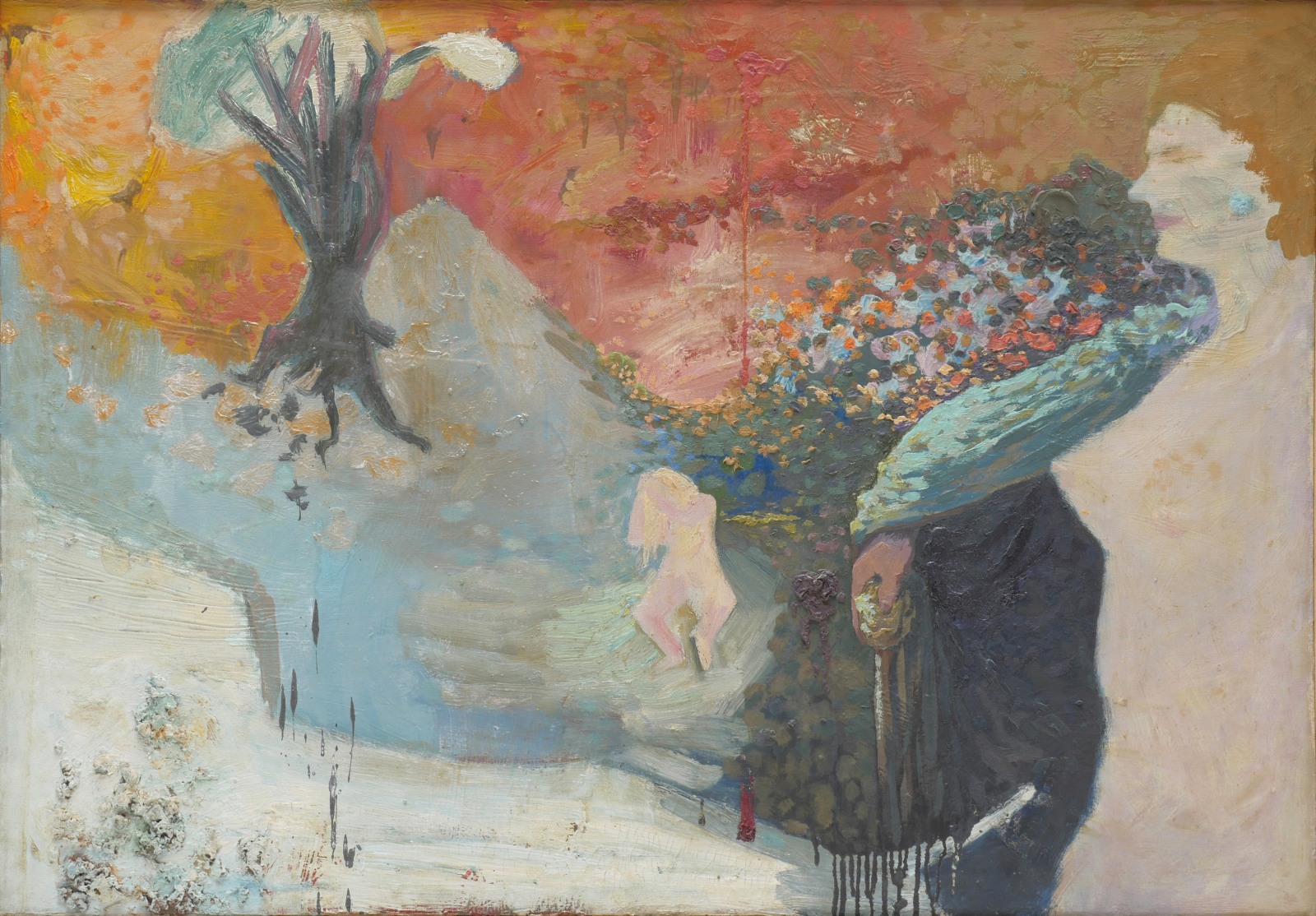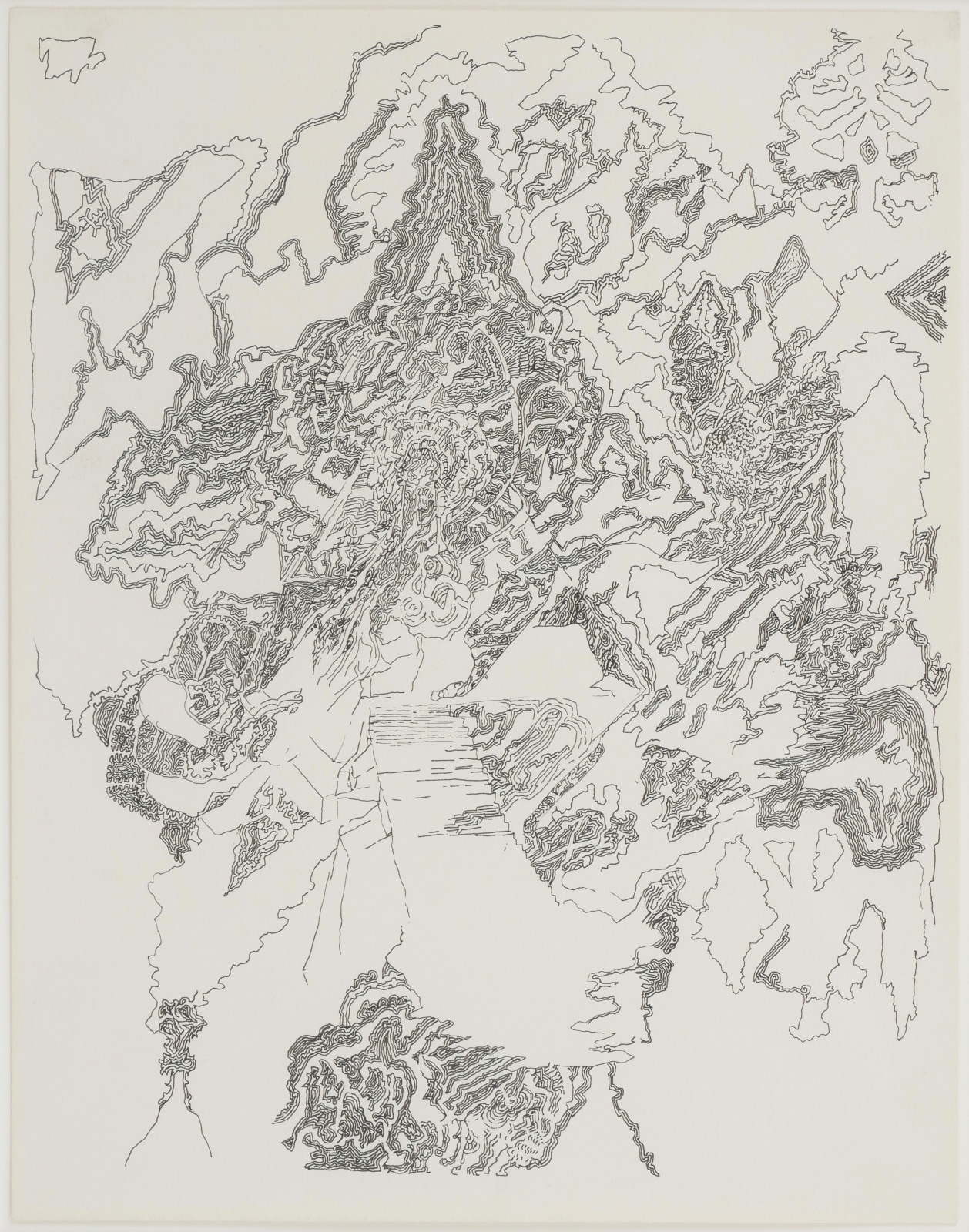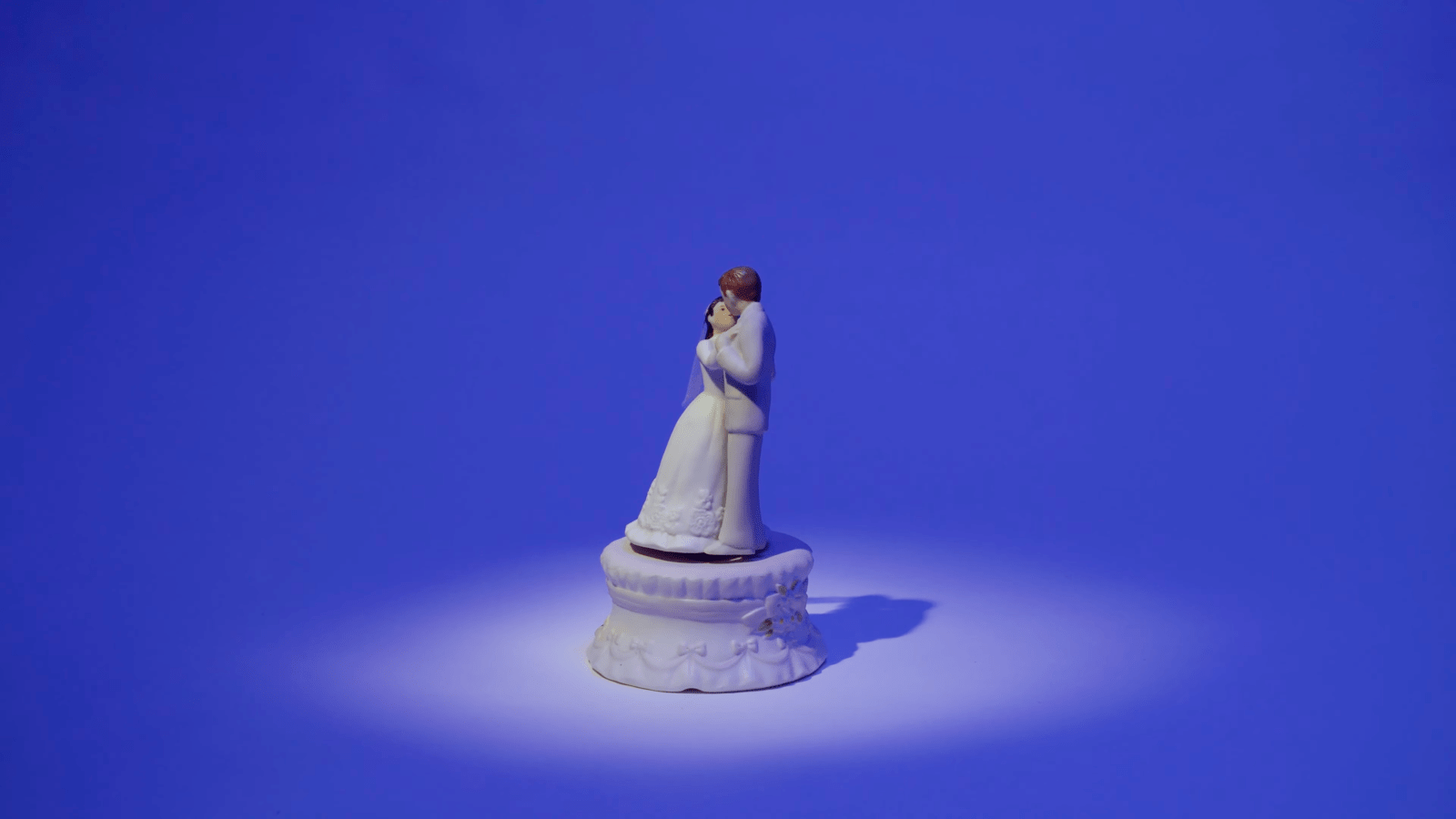Ever fantasize about curating an exhibition in the Hosfelt Gallery space? |
|
Here's your chance. We're inviting our community to take turns creating capsule installations at the gallery. Inspired by our recent trip to Germany and a remarkable installation at Museum Morsbroich called Schauraum, you'll be able to sign up to choose from the thousands of artworks in our inventory, which we'll install for one week, as an expression of the relationships you'd create and the story you'd like to tell — using art. Watch for an email with details and a sign-up link in the coming weeks.
|
|
|
 | Museum Morsbroich, Leverkusen, Germany | |
|
Jess | Bruce Conner | Liliana Porter
|
|
|
 | Jess (1923-2004), One of the Norns Is Dead, 1955/71, oil on canvas in artist's frame, 33 1/4 x 47 1/4 in | |
|
In Norse mythology, Norns are three maiden giants who tend the sacred ash tree at the center of the Cosmos, nourishing it with water and wet earth from the well of fate. As their names suggest, the Norns — Urðr (“The Past”), Verðandi (“What Is Presently Coming into Being”) and Skuld (“What Shall Be”) — delineate time. In addition to caring for the tree, they are responsible for the destiny of all humans.
Dominating the right foreground of the painting, one of the giantesses stretches out her arm, as water pours from what is either a fist full of soil, or a sponge dipped in the holy well. The tree, Yggdrasil, the framework upon which the nine worlds are supported, occupies the distance. In a valley between the two, a seated figure, Sif, the wife of Thor, grooms her legendary, golden hair under a sky as sparkling as her jewel-encrusted comb.
Jess broke with his family and renounced his surname because his parents refused to accept his loved one, the poet Robert Duncan. He’d also rejected a traditional “career” (he’d studied chemistry, then worked on the Manhattan Project) to live his life as an artist. So when he made this painting in 1955, the titular Norn — the one he considered dead — was the past.
But in spite of the the title, it’s Sif — personifying family and caregiving — that is the heart of this painting both visually and conceptually. The ideal of “household” is a central motif in Jess’ and Duncan’s work, and was philosophically foundational to them. Their home together was their haven: more than a place or a relationship, it was rooted in an exchange of ideas, made sacred through art and poetry. And this concept of “household” extended beyond the couple, to their community of poets, artists and friends.
As the Norns cared for Yggdrasil, Duncan and Jess nurtured Art. In this painting, the tree that is the nucleus of the Universe and meeting place of the gods, is Culture — both rooted in and the framework that supports Civilization. Sif is a stand-in for Jess, the anchor of the household and caregiver of their community.
One of the Norns is Dead, is both an autobiographical allegory grounded in legend, and a benediction given to his newly married friends, the poets Joanna and Michael McClure. It’s an entreaty to live in the now and for the future, and a tribute to the importance of creating family, no matter how it’s done.
— Todd Hosfelt
|
|
|
 |
Bruce Conner (1933-2008), TEMPLES, 1963, ink on paper, 14 x 10 7/8 in
| |
|
At the end of 1962, Bruce Conner, his wife, Jean, and their infant son, Robert, moved to Wichita from Mexico City. Their plans to live frugally in Mexico while continuing to sell Bruce’s work in the U.S. were unrealistic — almost nothing sold — and the family was forced to return with empty pockets to Bruce’s hometown. They settled, for a time, in a house slated to be demolished for new highway construction.
Yet, the constraints of money and shelter didn’t reduce Bruce’s level of activity. Between February and November 1963, he provided over two hundred works to five solo exhibitions across the country, from San Francisco to Chicago to Boston. These were retrospective collections of his assemblages and collages made before and during the year in Mexico.
During the same months he produced over a hundred new works, continuing his familiar constructions of found material but also expanding and pushing his practice into a new style of drawing. Two drawings in the current exhibition, one from the beginning of 1963 and the other from the year’s end, present different aspects of his consciousness drawn in different graphic styles—one that seems an enigmatic map and the other a powerful memorial.
|
|
|
TEMPLES, 1963, was drawn in Wichita early in the year and recapitulates the Mexican theme of psychotropic experience, now made with darker, felt-tip pens instead of the delicate lines of either a light pencil or a fine-point quill pen as he had used in Mexico. The drawing depicts a mountainous landscape, seen from above, rendered topographically but not literally, so that “landscape becomes other forms, with all sorts of energies moving around inside of them.” These energies — physical and psychic — are suggested but undefined, and we are left to perceive what we will.
By late April, when the Conners left Wichita and landed in Brookline, Massachusetts, Bruce had moved past his memories of Mexico and loaded his felt-tip images until they filled the page, edge-to-edge, with thick black lines and shapes.
|
|
|
 |
Bruce Conner (1933-2008), UNTITLED NOVEMBER 5, 1963, 1963, ink on paper, 26 1/4 x 20 in
| |
|
On October 10th, after almost a decade of negotiations with the U.S.S.R., the U.S. Congress passed into law The Partial Nuclear-Test-Ban Treaty. Three days later, Bruce started drawing UNTITLED NOVEMBER 5, 1963, finishing three weeks later on November 5th. Knowing that fear of a nuclear attack on San Francisco was a primary motive for moving to Mexico in October 1961 (just after the Soviets resumed atmospheric testing in August), we can detect the dark epicenter of an atomic explosion, seen through the crosshairs of a bombsight, radiating lines of energy over a crowded mass of confused shapes covering the entire sheet of paper.
Despite, or maybe in spite of, the promise of the new treaty, the threat of the Bomb stayed with him.
— Robert Conway, The Conner Family Trust
|
|
|
 |
Liliana Porter & Ana Tiscornia, Cuentos Inconclusos / Unfinished Tales, 2022, still from digital video
| |
|
My work is like watching a movie with the lights on because you try to surrender to the illusory space but at the same time the light keeps you aware of this other side of reality. – Liliana Porter
Liliana Porter works in the spaces between reality and fiction. With an ongoing practice spanning more than six decades, Porter is best known for her photographs, installations, and videos that feature an eccentric cast of toys and souvenirs in open-ended situations. Her films present consecutive segments preceded by a heading describing the scene, and are accompanied by a dramatic score composed by sound designer Sylvia Meyer. The combinations of text and sound underscore the drama, humor, and tragedy of otherwise ambiguous situations acted out by toys, souvenirs, figurines, and other knickknacks. While Porter’s carefully structured vignettes invite us to relate to the inanimate objects as human surrogates, her explicit cinematic editing disrupts a direct correlation between reality and its representations and emphasizes the varied and contradictory meanings of things.
– Juan Omar Rodriguez, Assistant Curator, San José Museum of Art
|
|
|
October 19 - November 22
Emil Lukas approaches his practice by dropping all pre-conceived notions of what a painting can or should be. From his choice of materials to his chromatic spectrums, Lukas’ wall-hanging works re-imagine painting both materially and structurally. |
|
|
November 8 - 11
We are thrilled to host our friend Hiro Murase for a pop-up shop in the gallery. Murase is the founder and creative director of Suzusan — a luxury clothing and housewares brand that utilizes traditional techniques in contemporary design. |
|
|
December 9 - January 27
New York-based architecture and design studio LOT-EK presents an installation made from a single shipping container in an exploration of the ecological impacts of global commerce. |
|
|
Parting shot from our latest trip to Düsseldorf |
|
 | Top, L-R: Lordy Rodriguez, Driss Ouadahi, Todd Hosfelt, Bernard Lokai. Bottom, L-R: Jutta Haeckel, Stefan Kürten, Birgit Jensen, Julie W. Chang, Cornelius Völker, Laura Nagle. | |
|
Hosfelt Gallery is located at 260 Utah St, between 15th & 16th streets. Wheelchair accessible entrance at 255A Potrero Avenue. For more information call 415.495.5454 or visit hosfeltgallery.com. Hours: Tu, W, F, Sa 10-5:30, Th 11-7 To schedule an appointment, call the gallery or sign up online at calendly.com/hosfelt-galleryCopyright © 2023 Hosfelt Gallery, All rights reserved.
|
|
|
|
|